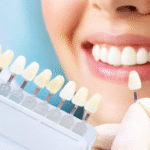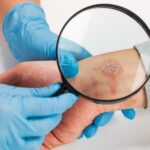
Open mouth during drilling treatment at the dentist in dental clinic. Close-up. Dentistry
Tooth decay can hide in places you can’t see. This can lead to pain and serious problems. A Birmingham dentist uses specific tools to find these hidden issues before they become severe. Early detection saves you from discomfort. It also helps protect your teeth. Here’s a look at five tools you might not know about. Each tool plays a key role in spotting decay early. All five are used to give you the best care possible. When hidden decay is found, it is easier to treat. Your dentist wants to keep your smile healthy and bright. By understanding these tools, you can feel confident in your dental visits. You will know how your dentist checks for decay. This empowers you as a patient. It also brings peace of mind. Regular check-ups ensure these tools work to your benefit. Remember that early detection is an important part of dental health.
1. Digital X-Rays
Digital x-rays are crucial in the early detection of tooth decay. Unlike traditional x-rays, digital x-rays provide immediate results. They show a detailed view of your teeth’s internal structure. This helps dentists spot decay that isn’t visible to the naked eye.
Digital x-rays use significantly less radiation. This makes them a safer choice for both children and adults. Quick results mean that your dentist can discuss findings immediately. They can create a treatment plan on the spot.
According to the American Dental Association, digital x-rays are a safe and effective tool. They are part of routine dental check-ups.
2. Laser Cavity Detectors
Lasers are not just for science fiction. In dentistry, lasers detect cavities and decay. These small hand-held devices illuminate the tooth surface with a focused beam.
When the laser hits a decayed spot, it reflects differently than it does on healthy enamel. This difference helps the dentist pinpoint decay. The process is painless and non-invasive. This makes it an excellent tool for children or those anxious about dental visits.
3. Intraoral Cameras
Intraoral cameras are miniature digital cameras. They fit comfortably in the mouth and provide clear images of your teeth and gums. These images are shown on a monitor, allowing both you and your dentist to see problem areas.
Intraoral cameras are valuable because they help detect decay between teeth or under fillings. They also help identify other issues like gum disease or cracked teeth.
With these clear images, your dentist can explain their findings better. This transparency builds trust and ensures you understand any recommended treatments.
4. Dental Explorers
The dental explorer is a classic tool. Its sharp tip helps dentists feel the surface of your teeth. They use it to check for sticky spots, which may indicate decay.
Though traditional, the dental explorer is effective. It’s especially useful for assessing the surfaces of your back teeth. These are more prone to decay due to grooves and pits.
5. Fiber Optic Transillumination
This tool uses a bright beam of light. Dentists shine it through the teeth to reveal decay. This method works well for spotting cracks and decay that are hard to see.
Transillumination is safe and painless. It allows dentists to make quick decisions. It is particularly useful for detecting issues in front teeth, where aesthetics are a concern.
Comparison of Detection Tools
| Tool | Technique | Applications | Advantages |
|---|---|---|---|
| Digital X-Rays | Imaging | Internal tooth structure | Quick, less radiation |
| Laser Cavity Detectors | Light reflection | Surface decay | Painless, non-invasive |
| Intraoral Cameras | Photography | Teeth and gums | Patient education |
| Dental Explorers | Physical examination | Surface texture | Manual sensitivity |
| Transillumination | Light transmission | Cracks, front teeth | Safe, quick assessment |
Each tool has unique strengths. Dentists often use a combination. This ensures they catch decay early. Recognizing these tools can reassure you during dental visits. Regular check-ups and cleanings are essential.
Remember, early detection is key to maintaining oral health. These modern tools play a vital role in keeping your smile healthy. By using these tools, dentists provide the best care. Your dental health is their top priority.










